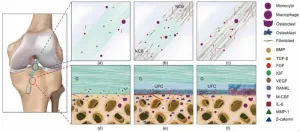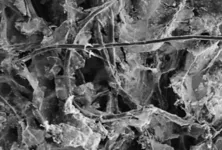(Press-News.org) Bacteremia, or blood poisoning, occurs when bacteria overcome the body’s immune defenses.
Bacteremia can worsen into sepsis, a condition that accounts for more than 1 in 3 hospital deaths per year.
Yet people are routinely exposed to and fight off bacteria from the environment without this deadly series of events occurring.
Scientists are trying to figure out exactly how bacteria spread throughout the body to cause systemic infection in the hopes of eventually stopping this process in its tracks.
Michael Bachman, M.D., Ph.D., clinical associate professor of pathology and microbiology and immunology at U-M Medical School and former postdoc Caitlyn Holmes, Ph.D., have tried to solve this mystery, focusing on gram negative bacteria like Klebsiella pneumoniae, a common source of pneumonia-initiated bacteremia.
In previous work, they determined that bacteria spread in three phases: infection of an initial site, such as the lungs; entrance into the bloodstream; and finally, replication and avoidance of filtration by the liver and spleen.
Traditionally, analyzing a bacterial infection is done by culturing tissue and counting the number of resulting bacteria.
“Experimentally, we can measure the first phase pretty easily in terms of how the bacteria infect the lungs and we can measure the third phase pretty easily in terms of how the bacteria survive in these blood-filtering organs and whether they replicate or not. But that transition out of the lungs and into the bloodstream has traditionally been difficult to measure,” said Bachman.
Using an innovative barcoding-style system developed with colleagues at Harvard University, Bachman, Holmes and their team were able to label bacteria with short snippets of DNA in mouse models and use computer analysis to track the movement of K. pneumoniae throughout the body.
They expected that the bacteria would replicate in the lungs until such a point that their clones overwhelmed the lung’s defenses, spilling out into the blood stream, says Bachman.
And while they did see this type of spread—which they called metastatic dissemination—there was evidence of another type as well.
Unexpectedly, “about half of the mice had the metastatic pattern, and the other half contained bacteria that escaped on their own into the bloodstream without the need to replicate to large numbers first,” Bachman explained about this second mode, which they called direct dissemination.
Overall, metastatic pathway correlated with a stronger infection than the direct route.
Furthermore, over time, infection progressed to more of the metastatic pattern.
“We need to understand the biology of each of these routes in order to figure out the best treatments,” said Bachman.
“There’s a mantra in infectious disease that is to find and treat the source to stop the bacteremia.”
Uncovering the existence of the direct route may mean that bacteria are setting up low level reservoirs in other parts of the body that could be better targeted to treat blood infections.
Additionally, Holmes created mutations in both the K. pneumoniae and mice that affected the mode of dissemination hinting that the interaction between the bacteria and the host’s immune system may determine the outcome of the infection.
“The project began with a very basic question—how does bacteria leave the lungs—that we have now provided some insight into, closing a significant gap in our knowledge,” said Holmes.
Additional authors: Katherine G. Dailey, Karthik Hullahalli, Alexis E. Wilcox, Sophia Mason, Bridget S. Moricz, Lavinia V. Unverdorben, George I. Balazs, Matthew K. Waldor.
Paper cited: “Patterns of Klebsiella pneumoniae bacteremic dissemination from the lung,” Nature Communications. DOI: 10.1038/s41467-025-56095-3
END
Scientists track pneumonia-causing bacteria as they infect the blood stream
2025-02-27
ELSE PRESS RELEASES FROM THIS DATE:
Nominations sought for 2026 Watanabe Prize in Translational Research
2025-02-27
The Indiana University School of Medicine is accepting nominations until May 15, 2025, for the 2026 August M. Watanabe Prize in Translational Research.
The Watanabe Prize is one of the nation’s largest and most prestigious research awards recognizing senior investigators focused on shepherding scientific discoveries into new therapies for patients. Nominees should be members of the scientific or medical communities who have demonstrated outstanding accomplishments in translational research.
The winner of the 2026 Watanabe Prize in Translational Research will receive a $100,000 award and spend time in Indianapolis from September 16-18, ...
Study finds support for solar energy has become politically polarized
2025-02-27
A new analysis of social media posts finds public support for solar energy remains high, though that support declined significantly from 2016 to 2022. The study also found solar power has become an increasingly polarized issue, with the shift in support being driven largely by opposition to solar power among people in regions that lean Republican.
“The U.S. saw significant growth in the solar energy sector between 2013 and 2022, but that growth has not been spread evenly across the country – some areas have seen more deployment of solar energy technologies than other areas,” says Serena Kim, corresponding author of ...
Advancements in artificial ligaments for ACL reconstruction: A leap towards improved outcomes
2025-02-27
Anterior cruciate ligament (ACL) injuries are common, especially among athletes. Each year, over 400 000 ACL reconstruction (ACLR) surgeries are carried out globally. While the success rate of ACLR is reported to be over 90%, a significant number of patients still face issues like revision surgery and long-term osteoarthritis. This has spurred research into better graft materials, and artificial ligaments have emerged as a potential solution. A recent review article published in Engineering delves into the current state and future prospects of artificial ligaments for ACLR.
Artificial ...
1 gene variant is poised to cure a devastating inherited disease
2025-02-27
1 Gene Variant Is Poised to Cure a Devastating Inherited Disease
Scientists compared five families and multiple generations to find a gene variant that prevents COPA Syndrome and opens the door to a new gene therapy for the condition.
For more than 15 years, Anthony Shum, MD, a pulmonologist at UC San Francisco, has tried to understand the random path of devastation that a rare genetic condition carves through the families it affects.
While many of those who carry the mutation develop severe lung hemorrhaging as children others never get the disease ...
Professional artists viewed as more creative than AI programs
2025-02-27
In the rapidly developing contest between human creativity and artificial intelligence algorithms, professional artists still have an edge in producing more creative AI-assisted artwork than the AI programs themselves or novice artists, according to research published by the American Psychological Association.
The rapid advancement of AI raises some existential questions about the nature of creativity, said lead researcher Paul Seli, PhD, an assistant professor of psychology and neuroscience at Duke University.
“Creativity ...
Closing the gaps — MXene-coating filters can enhance performance and reusability
2025-02-27
Despite improvements to air filtration technology in the aftermath of the COVID-19 pandemic, some of the smallest particles — those of automobile and factory emissions — can still make their way through less efficient, but common filters. An interdisciplinary team of researchers from Drexel University’s College of Engineering have introduced a new way to improve textile-based filters by coating them with a type of two-dimensional nanomaterial called MXene.
Recently published in C Journal ...
Digital Science adds AI-powered summaries to Symplectic Elements to drive research discoverability
2025-02-27
Digital Science has today announced new enhancements to Symplectic Elements, which will now offer the ability to embed AI-generated summaries for publication abstracts within a researcher’s public profile.
Symplectic Elements, a leading research information management system (RIMS), enables the creation of comprehensive public profiles. These profiles are hosted on sleek, modern, and intuitive online portals that offer advanced search and discovery capabilities while ensuring alignment with organizational branding. Profiles can be made available not only for researchers and faculty but also for ...
Solar technology could meet UK’s electricity needs without sacrificing farmland
2025-02-27
New University of Sheffield research shows that combining solar panels with farming (agrivoltaics) can meet UK solar energy targets without sacrificing agricultural land
The coverage potential for the technology is so high that it could meet UK electricity demand more than four times over
Regions identified for the effective deployment of agrivoltaics include Cambridgeshire, Essex, Lincolnshire, and the broader East and South East of England
The approach counters criticism of traditional solar farms, which are often opposed ...
Study finds aged biomass emissions could pose greater risk to lungs than fresh wildfire smoke
2025-02-27
Biomass burning—whether from wildfires, wood stoves or agricultural fires—sends massive amounts of tiny particles and chemicals into the air. These emissions are not just an environmental issue; they pose serious health risks, especially for our lungs. An Environmental Pollution study, co-authored by Dr. Jason Surratt, a professor in the Department of Chemistry at UNC-Chapel Hill, reveals how two key components of biomass smoke—levoglucosan and 4-nitrocatechol—affect human lung cells. Their findings suggest that aged ...
Four research teams rethink particleboard construction and reuse
2025-02-27
For a few hundred dollars, a bedroom can be refreshed with the latest flat-pack offerings. Wood particleboard furniture is affordable and generally easy to assemble, but particleboard is often held together with formaldehyde-based resins that make it hard or impossible to recycle. Now, with the help of science, old pressed-wood furnishings could be repurposed, and new modular decor could incorporate more environmentally friendly materials. Four articles published in ACS journals reveal how. Reporters can request free access to these papers ...


